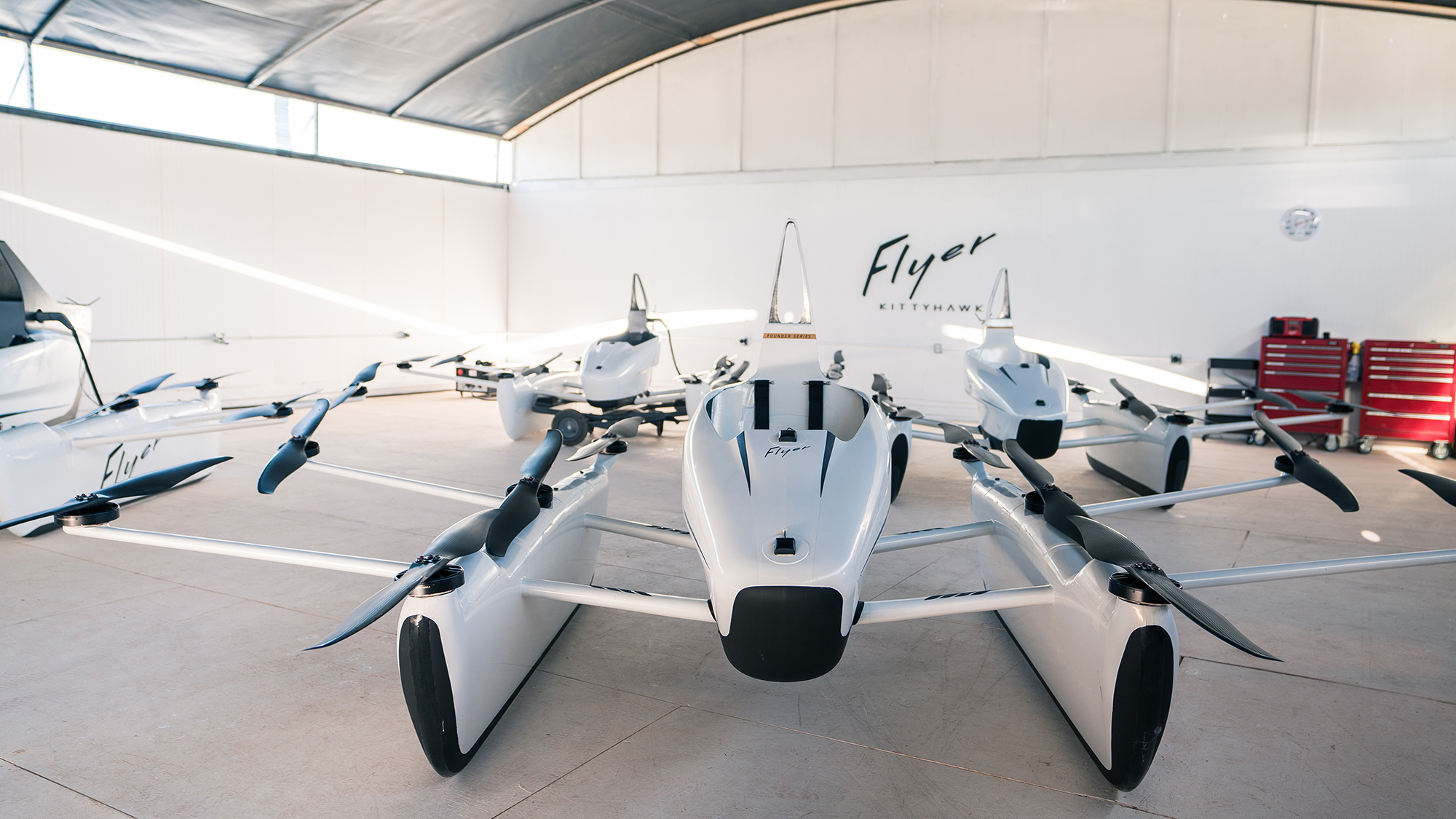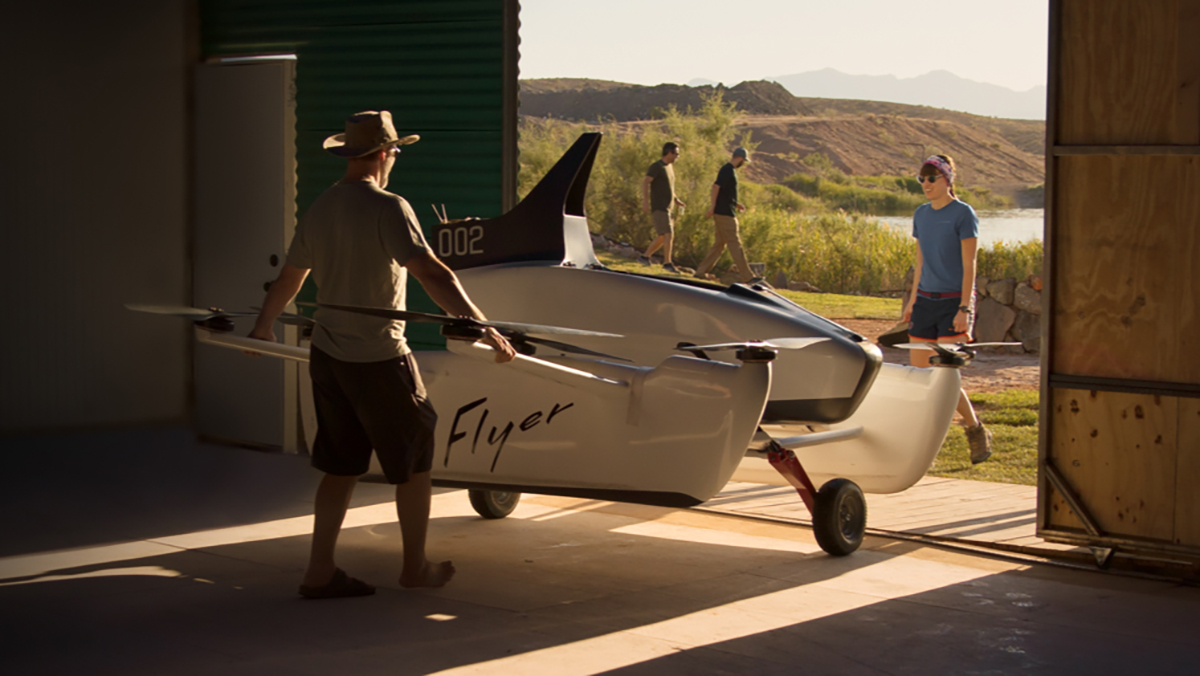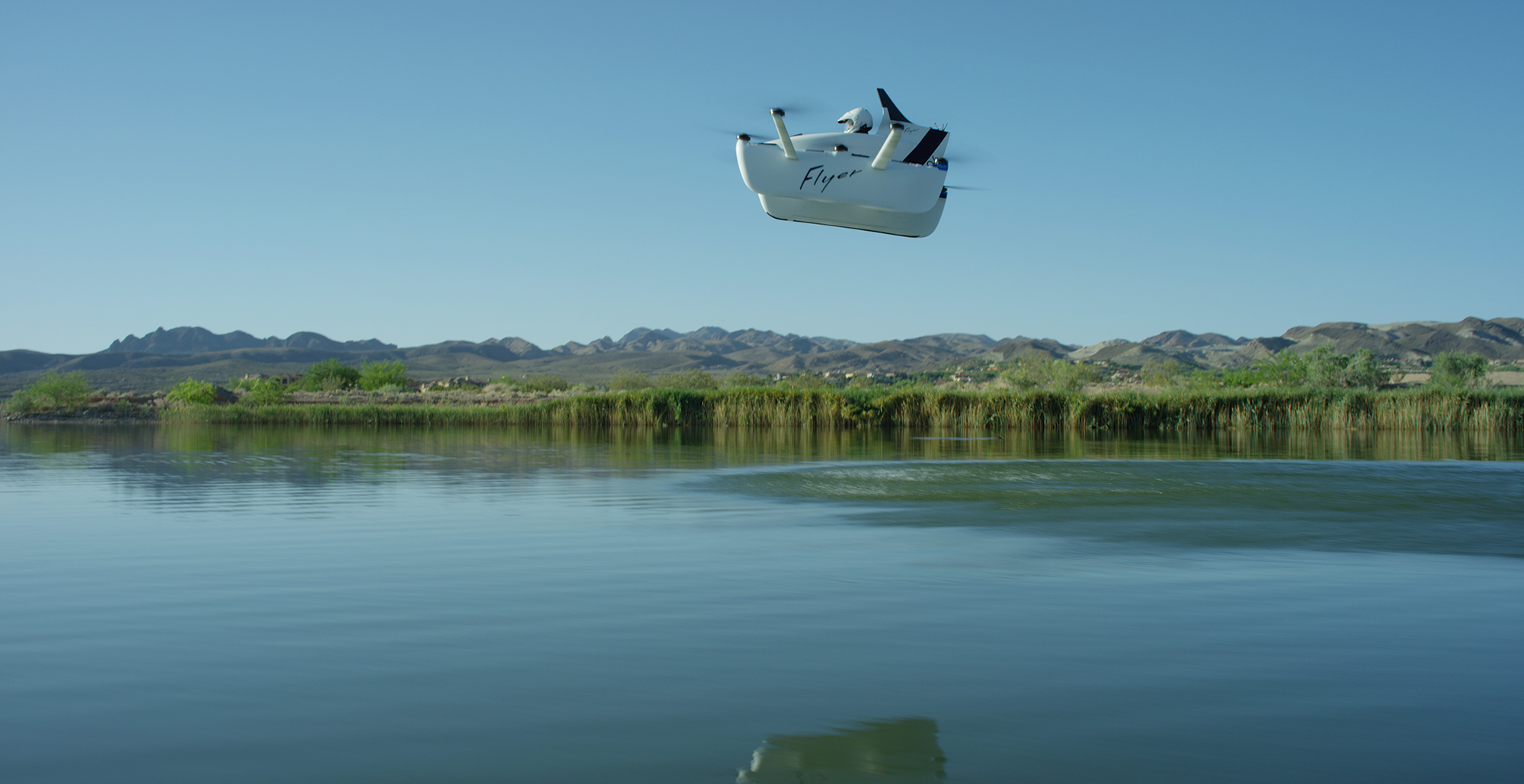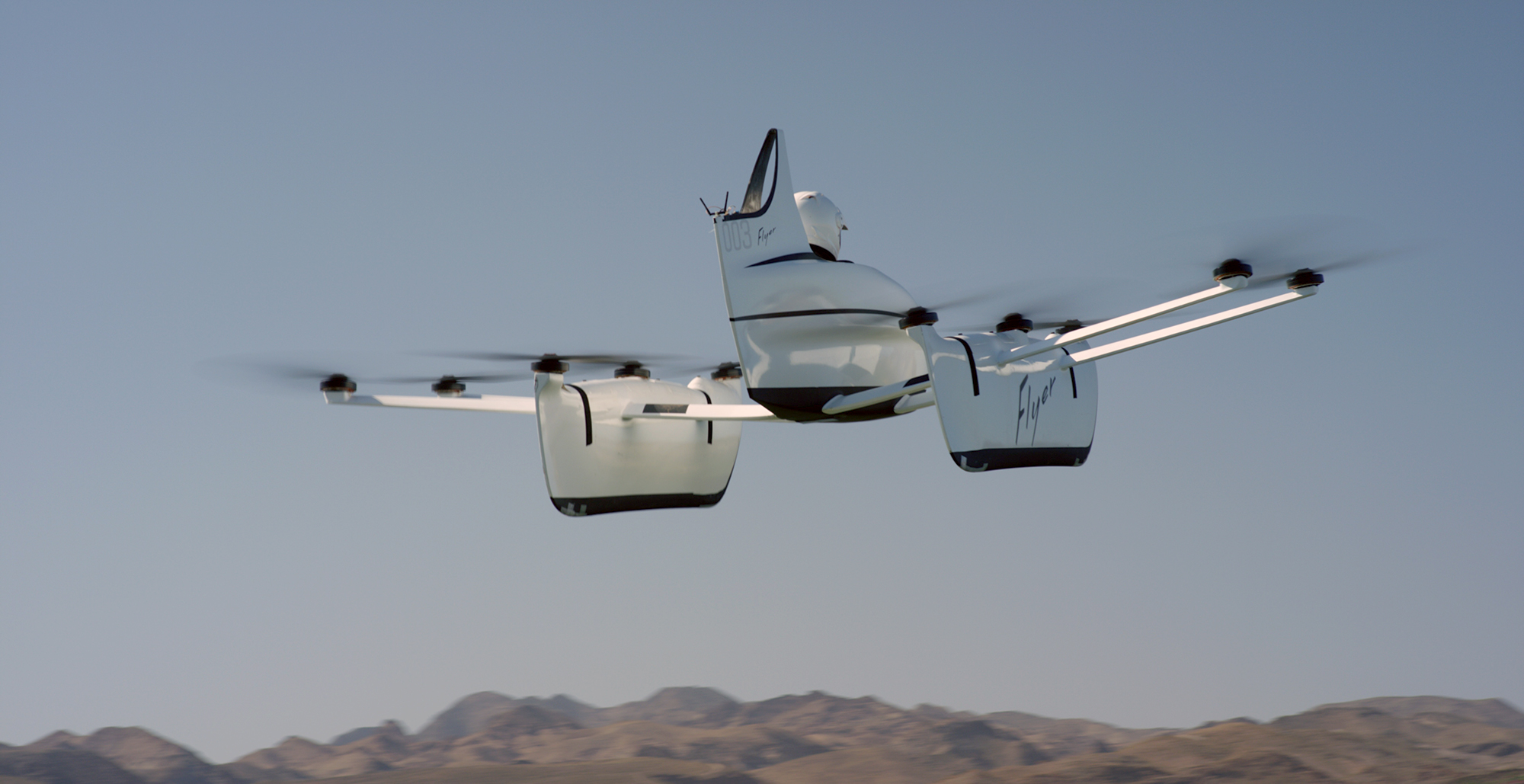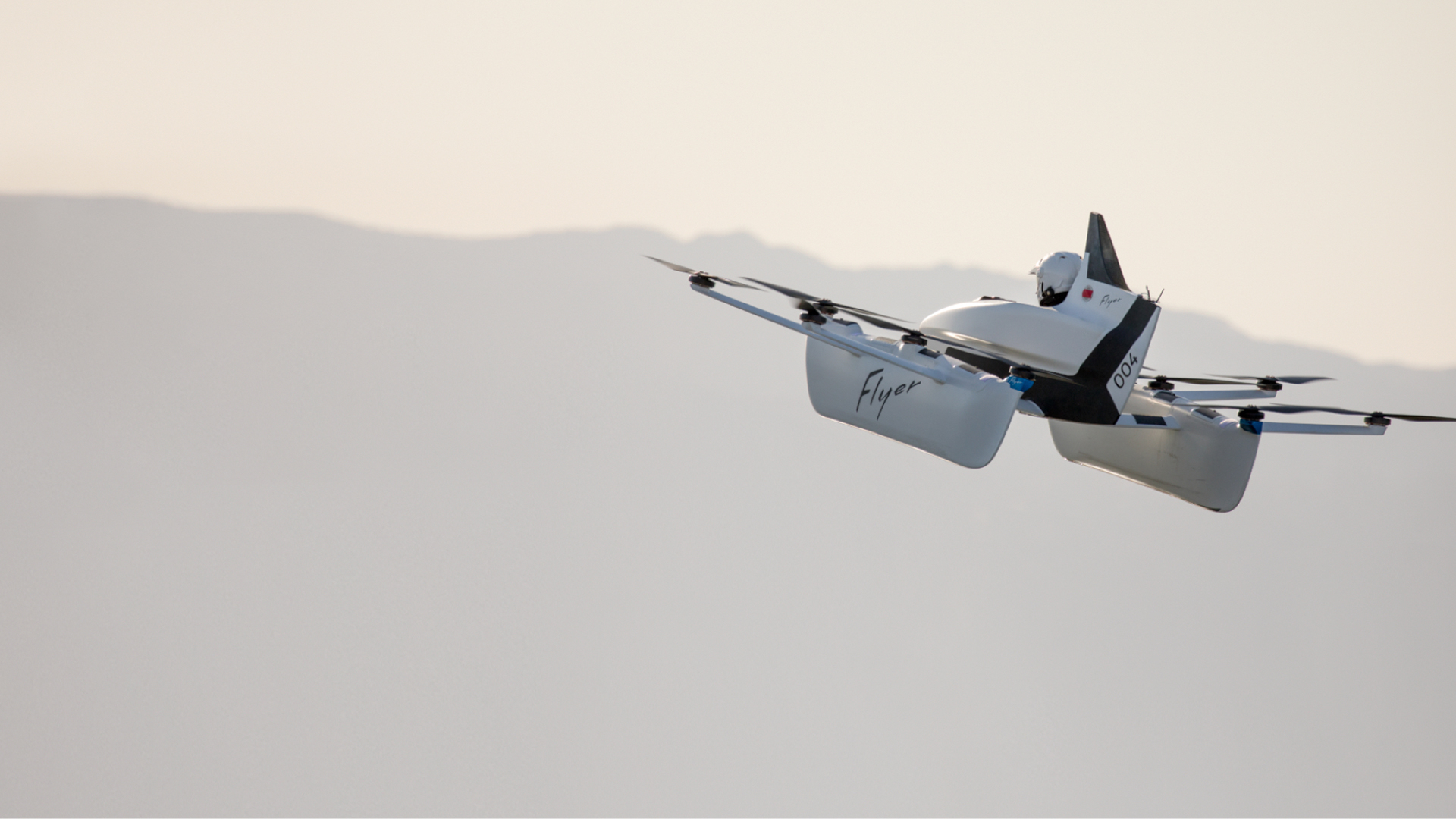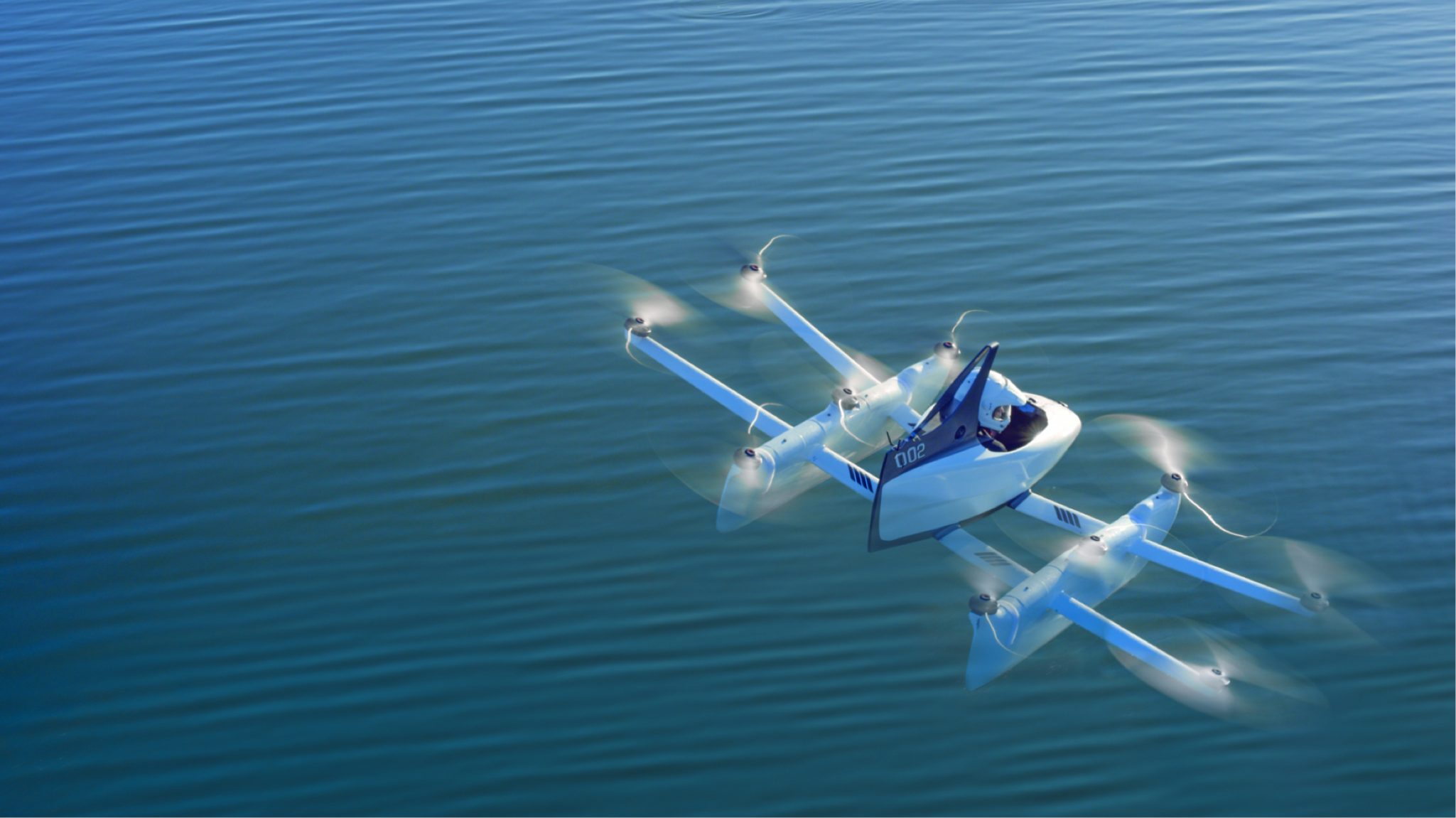Personal flying vehicles are all the rage just now, with Kitty Hawk one such outfit working hard to build a viable aircraft to take you places.
Looking very different from the prototype it showed off just over a year ago, the redesigned Flyer looks like a cross between a drone, an F1 car, and a sea plane.
Unveiled on Wednesday, June 6, the all-electric single-seater features 10 sets of rotors and two control sticks. It currently has a top speed of 20 mph, but it says a future design could reach speeds of up to 100 mph.
Kitty Hawk CEO Sebastian Thrun described the latest version of the Flyer as “a recreational vehicle” as it only has 20 minutes of flying time, but he added that it could one day be used to transport people around cities, taking the company toward its long-term goal of “getting rid of [road] traffic.”
Google co-founder Larry Page is one of the people helping to finance the Flyer, the connection apparently forged during Thrun’s time with Google’s autonomous car unit (today called Waymo), which he helped to launch.
To be clear, the Flyer is a real, fully functioning aircraft. To prove it, CNN’s Rachel Crane recently took it for a spin, an experience she described as “a blast.”
Far easier to fly than a helicopter, Crane said she doesn’t have a pilot’s license and only needed an hour’s training before getting behind the controls for her successful flight.
To ensure ease of use, the Flyer operates with software that utilizes data from multiple smart sensors for a fully stabilized and smooth flying experience. Indeed, lead engineer Todd Reichert said the team’s aim is to “take everything hard out of flying, basically to be able to give people an experience where it’s super-easy to fly,” adding that the machine is “transformational in terms of how accessible we can make flights.”
Reichert describes Kitty Hawk’s progress in terms of a story arc, moving from “recreation to exploration to transportation,” and its latest effort suggests it’s heading in the right direction.
But it has plenty of competition. For starters, there’s the Airbus-backed Vahana self-piloting air taxi, as well as the 184 flying machine from Chinese firm EHang. Uber, too, is developing its own aerial vehicle, while Joby Aviation and Volocopter are also developing their own compact flying vehicles.
One thing’s for sure. We’ve come a long way since this ropey-looking design took to the skies (or just about) in 2011.
